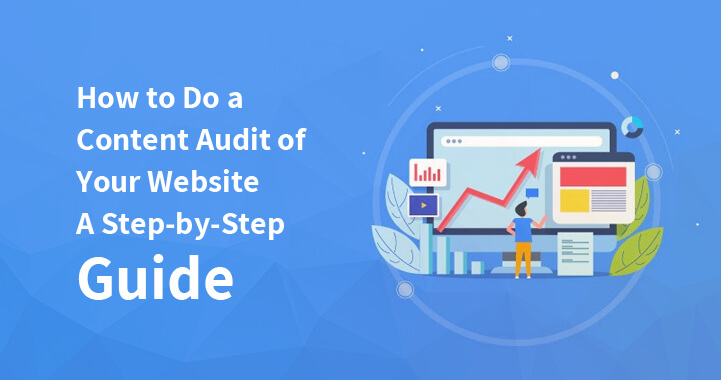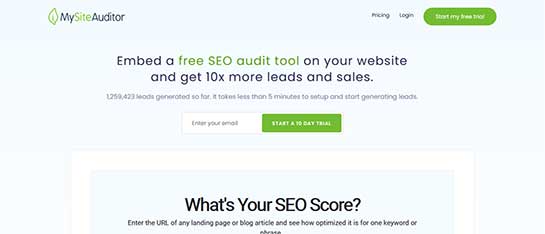You might have a website that works properly but unfortunately, you encounter that it is not worth it as it is not bringing much traffic to your business as per your wish.
Table of Contents
Getting panic is not a solution to such a problem. But performing a audit of your website’s content is one of the better options that you must go for.
As a beginner or a non-tech person, it is difficult to find out methods to improve your website. But for every problem, there is a solution.
If you are able to perform the full content audit you will know the exact problem plus you will be able to find the things that are working properly.
By doing this you can create a plan of action that which things of your website need to be eliminated and which to be not.
In this blog, you will find the complete method to perform audit of your website’s content. You will be able to identify your actual goal to analyze, data collection, and improvements.
Although you will be spending time to know which kind of data you will need to gather which is the hardest part of website improvement.
First, determine your main purpose
What is your goal for performing a content audit on your website? This is the very first question that you must determine. You should be familiar that which kind of information you want and once you get that information what you will do with that.
If you are not familiar with your goals that means you are just taking out data which not have any goals. However, you will be able to save a lot of your time once your goal is clear.
You might not need some information that you are searching for by investing so much of your precious time. Thus the time you spend while collecting the information will be of no use.
Potential targets
Some reasons are mentioned below to perform a full content audit. These points will assist you to what to do with the information that you have gathered.
- You will need to find out that in past which type of content has given the best results.
- Find out space in your articles where you can add more relevant content to get more attention towards your business.
- Find out some of the content which has fewer conversions but has a lot of views.
- Find out some areas where you need to perform on-page optimization to make improvements.
- Find out some of the pages, articles, and blog posts that can be combined into one single page to give desired output to your customers.
- Pin-out some of your website’s content that is not related to your business and should be neglected.
Find out some of the areas that can be used to brand a new article.
For creating extra assurance such as infographics, eBooks, whitepapers, etc which type of content will be helpful needs to find out.
It is not necessary that you must choose only a single goal. However, you can choose more than one motto. Considering few business mottos in mind let us know more about the things you required before starting a audit of your website’s content.
Step 1: Gather current content of your webs
A collection of plenty of data will be required for any content audit. But before doing this you will have to collect all the data in one single place. Some common methods to do this are given below
- Build a list or spreadsheet – it is not necessary to have a visually appealing or fancy list. The most important thing is that it should be functional.
- All URLs and titles must be manually copied for your posts and pages – this can be done in various sections or columns in documents. Rather than this add categories for all such kinds of content.
- If your website has so much content then utilize the features of WordPress tools- if you have a small-scale-based website then the task of copying all post titles and URLs will be easy. But if you have a large business website that includes hundreds of blog posts then using an automated tool is the best option.
On the web, you will come across so many WordPress tools that are available for free of cost which will help you in copying thousands of URLs and post titles easily. You will find so many SEO tools which will behave like a website crawler to gather some important content of your website.
Identify which kind of data you are collecting
Now you will have to identify that which points are important for you.
Now you will have to build columns for every data point. Now because you have started the data collection process you have a clear idea and knowledge so that you can keep track of everything. To minimize the time-consuming process it is important to rely on this process.
Step 2: Gather information
For data collection, once you have the basic structure now you can move towards the content edit. Now all things that you have added to your spreadsheet will depend on your motto.
Some things which are important more than your goals are listed below. These items belong to the SEO
- Target keywords
- Page title
- Meta description + title
Some data points are given below that you can select from. As your guide choose a goal. Some of the data points that you must consider are given below
- Click-through rate
- Average search position
- Pageviews
- Keyword density
- Time on page
- Words count/article length
- Number of internal links
- Bounce rate
- Type of content (infographics, blog post, image, eBooks, videos, and more)
- Number of social shares
- Tags assigned to content
- Number of comments
- To the content, the categories assigned
Selecting the right possibility is important to proceed. As the thumb rule says.
- To determine the gaps in coverage, collect the content topics.
- If you want to enhance the conversions or website then put the SEO data together.
- Study the comments and social shares to enhance the reach of your marketing.
Data collection tools:
Now you have got the proper idea that how to collect the data point now the time is to work on it. You might have felt that collecting information is one of the toughest jobs.
This is the reason that why we recommend you utilize the features of WordPress plugins and tools to make a process easier. Some suggestions are provided that you must choose.
Google Analytics
The best option to use is Google Analytics. This will help you provide an option to easily view your customer’s behaviors and how they are interacting on your website.
Shared Count
This is a WordPress plugin which will help you to determine the total number of the link shared likes and viewed. This plugin will gather complete details of your social accounts.
Google search console
With the help of the Google search console, you will be able to check the total search traffic of your website and its performance. With this tool not only you can view site impressions but also you can view search result positioning and clicks.
Marketing Grader
This is another tool that helps you to determine that how well all your marketing efforts are performing. You just need to add the address of your website.
After this, you will be able to all compare with your competitor’s website plus you can review grades and tips to improve the score for free of cost.
MySiteAuditor
For SEO optimization these tools will allow you to access every single page. By just adding the URL of your website and clicking on ‘start my free trail’ you will get a free SEO audit.
SEO Site Checkup
Another free tool is an SEO Site Checkup which will give a complete report of your website’s SEO Performance and its content. Also, it offers analytics and monitoring tools.
Plus you will find so many other WordPress SEO plugins to help you in SEO optimization. Some of the top plugins are Yoast SEO, RankMaths, and All in one SEO pack.
Related Post: How to Create a Powerful Content Marketing Strategy with Visuals
Step 3: The things you have collected, analyses it
Until now we have come across a few plugins and tools that help you to collect data. Now you might have been wondering that what next you need to do?
This is the time where you need to start the analysis. now your first work will be to start analyzing each and every post or page.
If you have collected the information seriously then you will be able to find the areas which are weak of your pages and posts.
From here, you require to take some crucial decisions:
- Will you keep the same content and modify it with the new one?
- The content will be kept as it is?
- Can some posts and pages be integrated with a few other pages and posts?
- Will you delete the complete content and add a new one?
Answering some questions will take you some time but this is the important task that you need to perform.
For example, you need to find out whether your post is performing well not does it really has a bad bounce rate? If yes then this is high time to check internal links. Find out some of the tactics that how you can keep your visitors stay for a longer time.
If your pages are having so many people coming but still you are facing low CTR. this means you have an opportunity to improve the SEO for Meta description and title.
Find out the areas that can be expanded
Once the task of a content audit is completed, in your current content you will determine some ‘holes’. To find out few things you can perform competitor analysis from the content that is missing.
Step 4: improve your website’s content
Once you have carefully analyzed your content, now you will need to prepare your plan of action.
Consider an example, that your website has a blog post “list few reasons that why blogs are essential’. Such kind of article should be consisting of at least 1000 words.
Thus the blog post should be included with some tips and research along with few outbound links. This is the reason that why your visitors leave your website after reading the article.
The best way to improve your website is to add a call to action. You can even ask your customers to share or leave a comment on your post.
This will help you to get more leads for yourself.
If your website content is not working properly then you need to improve it. To fill up the gaps you can add a few images, links, GIFs, videos and also make use of creative formatting.
This is a lengthy process but it is essential to make sure visitors find relevant content and stay on your website for a longer time.
Conclusion:
The task of performing a content audit on your website is time-consuming but it is worthy. Few steps that we have learned to perform audit of your website’s content are
- Recognize your goals
- Gather relevant content
- Collect related data
- Examine the information
- Perform according to the plan of action





